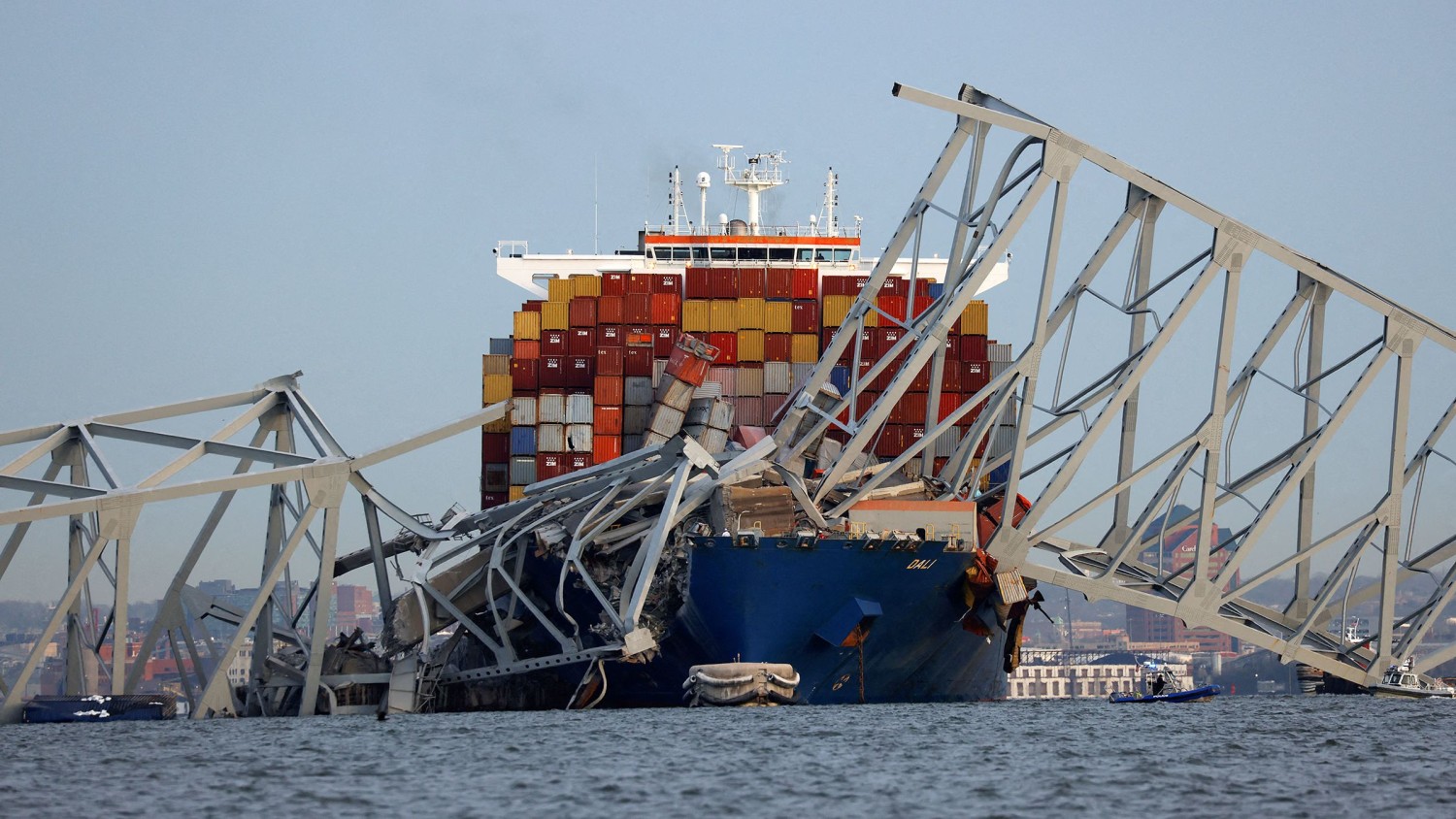
This article is more than
1 year oldJustice Department seeks $100 million from two companies that owned ship that destroyed Baltimore bridge

The two companies, Grace Ocean Private Limited and Synergy Marine Private Limited, “sent an ill-prepared crew on an abjectly unseaworthy vessel to navigate the United States’ waterways,” the suit reads. “They did so to reap the benefit of conducting business in American ports. Yet they cut corners in ways that risked lives and infrastructure.”
Federal prosecutors say that the hefty financial penalty would cover the costs of the government response to the fatal bridge collapse and for the monthslong effort to clear the wreckage – about 50,000 tons of steel, concrete and asphalt, according to the Justice Department – from the water so that the Port of Baltimore could reopen.
Principal Deputy Associate Attorney General Benjamin Mizer declined to comment on whether the department will also pursue potential criminal charges from the collision during a call with reporters Wednesday, saying that “we cannot comment on any criminal investigation or action today.”
The civil lawsuit is the federal government’s first enforcement action after the nearly 1,000-foot-long, 213-million-pound container ship known as the Dali struck a crucial support column the Key Bridge could not stand without. The collapse killed six overnight immigrant laborers who were fixing potholes on the bridge.
“The Justice Department is committed to ensuring accountability for those responsible for the destruction of the Francis Scott Key Bridge, which resulted in the tragic deaths of six people and disrupted our country’s transportation and defense infrastructure,” Attorney General Merrick Garland said in a statement Wednesday. “With this civil claim, the Justice Department is working to ensure that the costs of clearing the channel and reopening the Port of Baltimore are borne by the companies that caused the crash, not by the American taxpayer.”
The department also asked for punitive damages, writing that the two companies that owned the ship “need to be deterred because they continue to operate their vessels, including a sister ship to the Dali, in U.S. waters and benefit economically from those activities.”
In the civil lawsuit, the Justice Department goes into detail about how failures on the ship led to the disastrous collision and slams the two companies for not reporting issues with the ship.
“This tragedy was entirely avoidable,” the department wrote, adding that “none of the four tools that might have averted disaster—the rudder, the propeller, the anchor, or the bow thruster—was working or operating as it should have been.”
Prosecutors wrote that, instead of fixing longstanding problems with their electrical transformer, the companies “jury-rigged their ship” with makeshift braces that repeatedly broke.
When those electrical transformers broke the night of the bridge collapse, the ship’s engine room “went completely dark,” prosecutors wrote. Power should have automatically transferred to a backup transformer “within just a few seconds, while there was still ample time to steer away from the bridge,” they wrote, but that safety feature had been “recklessly disabled.”
The Dali briefly regained power, prosecutors said, but lost it again one minute later because of additional failures in the ship’s infrastructure. Those failures were caused by the companies’ decisions to cut corners in the ship’s upkeep with decisions “made to save money and for their own convenience,” they said.
Prosecutors also noted that the ship had lost power one day before the collapse, but that the outage was never reported to the Coast Guard as required by law.
This story has been updated with additional information.




